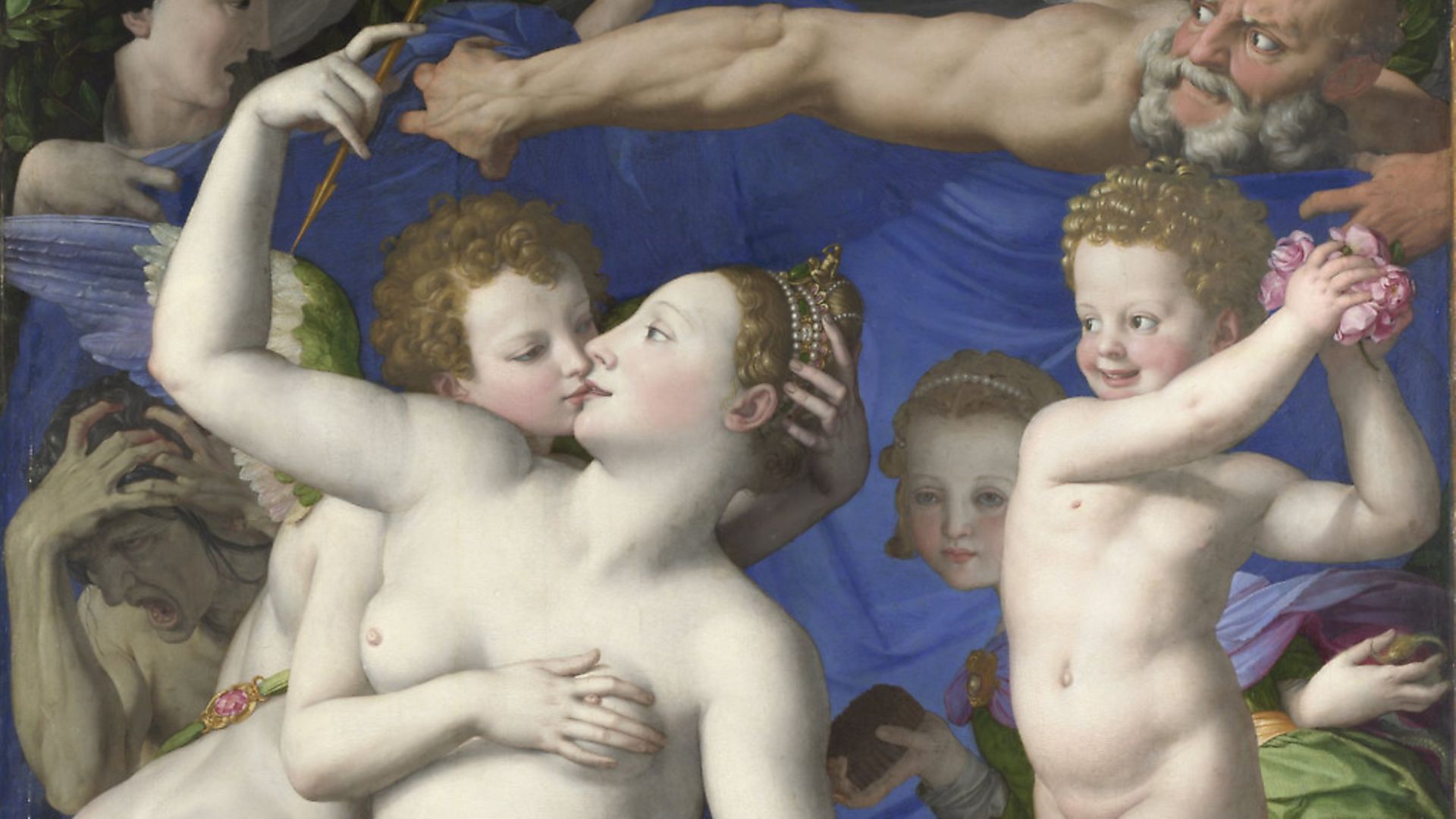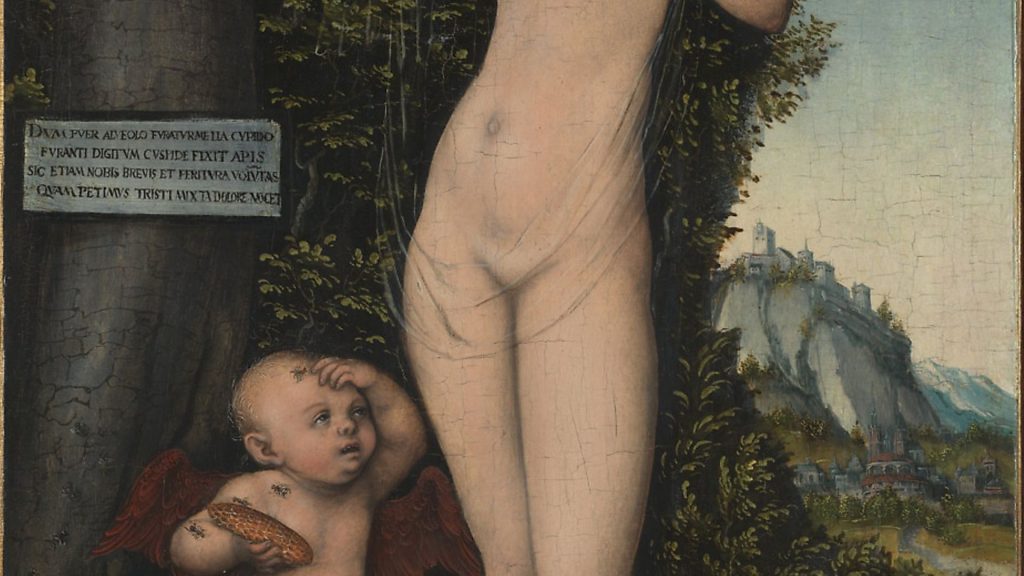
Richard Holledge considers the troubling implications of a now-postponed exhibition which took sin as its theme.

Lucas Cranach the Elder
1529 – Credit: Archant
It is devilishly difficult getting to grips with sin. Are the wages of sin death, as the Bible has it? Or for the non-believer, an affront to society to be punished according to the mores of time and place?
Or can it be dismissed in these heathen times as a mediaeval, outmoded concept? Perhaps more a matter of humour. As the actress Mae West opined: ‘To err is human – but it feels divine.’
An exhibition at the National Gallery simply entitled Sin had been due to open on April 16, fittingly enough in the week after Easter when ‘Christ died for our sins’.
It draws predominantly on its own collection – one third of all the works in the Gallery’s collection of western European art are of religious subjects – to explore the subject through the eyes of 15 artists including Lucas Cranach the Elder (1472-1553), Bronzino (1503-1573), Jan Brueghel the Elder (1568-1625), and, from the Dutch Golden Age, Jan Steen (1626-1679).
There are also secular offerings from William Hogarth (1697-1729), and coming up to date – but not from the National collection – works by Andy Warhol, the sculptor Ron Mueck and Tracey Emin.
While we wait for the gallery to reopen, the exhibition’s scholarly catalogue by curator Dr Joost Joustra is for sale online and offers more detail, discussion and context than perhaps a trip to the gallery might have afforded, though as Dr Joustra suggests: ‘I think we will appreciate the real thing all the more when this is over.’
And while we wait, sin continues to rear its tempting head.
In the beginning there was Adam and Eve, painted by Cranach the Elder in 1528 at a time of religious turmoil. In 1517 Martin Luther had nailed his protest against the corruption of the Roman Catholic church to the door of the Castle Church of Wittenberg, Cranach’s home town and with that defiant gesture the Protestant Reformation began. Cranach painted 50 versions of the Garden of Eden, including this depiction of the errant pair who could have stepped from the pages of Paradise Lost written in 1667 by the staunchly Puritan John Milton:
Best Image of my self and dearer half,
The trouble of thy thoughts this night in sleep
Affects me equally; nor can I like
This uncouth dream, of evil sprung I fear;
Yet evil whence? in thee can harbour none,
Created pure.
In Cranach’s portrayal the ‘pure’ Eve has a distinctly knowing look as she tempts Adam with the apple. He, on the other hand, is puzzled, torn between duty and temptation, scratching his head as if he has just awoken from his own ‘uncouth dream’.
The serpent glides down the tree towards them, an Iago whispering in their ears, while around them a menagerie of God’s creatures; stags, lions and wild boars.
The tame animals appear in pairs; two partridges and two deer which represent chastity and monogamy.
One only needs to compare Cranach’s Adam and Eve with Jan Brueghel the Elder’s Garden of Eden to find shared themes.
Though Brueghel was influenced by the Roman Catholic Church and Cranach was close to Luther they both emphasise the beauty and variety of God’s creation and dramatise the moment sin destroyed Eden’s purity.
Breughel painted more than 100 works on the theme of paradise which earned him the soubriquet ‘Paradise Breughel’ and here Adam and Eve are almost lost from sight, far away in the woodland distance, as if they have been banished already.
The animals, however, exist in a harmonious relationship to each other and each has a symbolic meaning. Lions represent the power of God, a horse signifies courage or generosity, a swan or a white duck symbolise purity but a brown duck like the one in the painting might be possessed by an evil spirit.
A peacock represents the resurrection, everlasting life and incorruptibility.
If the sinners are contrasted with the innocence of the animal kingdom, Bronzino’s An Allegory with Venus and Cupid might, with all its fleshy carnality, appear to be a celebration of lust rather than a condemnation of that all-pervading sin. What are we to make of it?
The National Gallery’s own website is enthusiastic – almost indecently so – in its description of the painting: ‘Venus, goddess of love, steals an arrow from her son Cupid’s quiver as she kisses him on the lips. Cupid fondles Venus’ breast, his bare buttocks provocatively thrust out as he returns her kiss and attempts to steal her crown.’
It is a summary which would not have been well received in 1860 when the gallery first acquired the work. It was judged a ‘most improper picture’ and a restorer was instructed to conceal Venus’s tongue entering her son’s mouth and to remove the erect nipple between Cupid’s groping fingers.
Yet the rampant pair are surrounded by admonitory images which show the dangers of illicit love. A nude child representing Pleasure showers the pair with rose petals unaware that his foot has been pierced by a rose thorn, Deceit, while the head of a girl but the body of a creature offers Venus a honeycomb, hiding the sting in her tail with her other hand. Behind the lustful Cupid, a malevolent figure which could represent jealousy or perhaps syphilis.
It’s a sexy picture and one to be enjoyed as such but it is also fiercely moralising – ‘an extraordinary puzzle,’ says Dr Joustra – and quite a contrast to the uncomfortable reality of Dutch painter Jan Steen’s The Effects of Intemperance (c. 1665).
A drunken women is slumped on the steps of her house, a flagon of wine overturned and empty in front of her. It is a scene of chaos and hopelessness.
She is oblivious to the noisy children around her, her pipe is just about to slide from her fingers on to her dress which also rests perilously close to a brazier.
Bizarrely, a young women on her knees is offering a parrot a glass of wine and in the background a man is canoodling with a buxom wench. Her husband perhaps. Her degradation is complete.
It’s hard to imagine salvation coming her way but in Christ and the Woman taken in Adultery by the father of Jan Brueghel, Pieter the Elder, redemption is at hand.
The pharisees surround Christ and test him with the challenge. ‘Master, this woman was taken in adultery. Now Moses in the law commanded us, that such should be stoned: but what sayest thou?’
The imagery is bleak, the figures in grisaille, the vitreous pigment used in colouring glass which creates a stony grey effect, with figures as ghostly as apparitions from beyond the grave.
They are as implacable in their condemnation of the woman as they are in their challenge to Christ. On his knees he traces with his finger in the dust: ‘He that is without sin among you, let him first cast a stone at her.’ He is defiant in his forgiveness of the sinful woman but he is weighed down by the hostility of his critics and by the burden of his inevitable fate.
There is no hope of forgiveness for any of the dissolute players in William Hogarth’s satire Marriage A-la-Mode. In the second of six pictures The Tête à Tête continues the scandalous story of a disastrous marriage of convenience between a wasteful aristocrat’s son and the daughter of a social climber.
We see the husband, clearly nursing a hangover, who has returned from a night in gaming houses and brothels. A dog sniffs at a scented cap belonging to a prostitute or his mistress and he sports a black mark on his neck which suggests he has caught syphilis.
The wife is indifferent. She gives her useless husband a sly look as she stretches out her arms, as if preening with self-satisfaction. She might be pregnant, she might herself have been romancing another. It’s typically Hogarthian. A cynical spectacle of sin. Un-pure and simple.
Tracey Emin’s neon It was just a kiss is more subtle than its simple design suggests. Is it justification of an illicit moment, a lament that a kiss did not go far enough, or a dismissive aside?
The catalogue suggests that ‘it could also be related to the story of Christ betrayed by Judas with betrayal coming by a kiss. Just a kiss!’ but somehow it feels more of an excuse than a confession.
What is missing from the exhibition, whether in Emin’s slight piece or even the heavily-freighted symbolism of Cranach and Brueghel, are images of sin’s inevitable bed fellow – at least as far as the Bible goes – revenge, punishment and destruction.
There is no scattering of the builders of the Tower of Babel, no destruction of Sodom and Gomorrah or the plagues visited on ancient Egypt for the persecution of the Israelites – the storm of frogs, a plague of locusts, the thunderstorms of hail and fire.
But it is tempting to think of today’s ‘plague’, the Covid-19 pandemic, in those terms and ask whether such images would be represented if the show was in the planning stage now. ‘I would have definitely avoided it,’ says Dr Joustra. ‘People make those connections (between sin and punishment) quite quickly but I think we should be very careful making them. To say that this has happened for a reason – we should avoid that kind of thinking. But I do think it shows how our thought process works when it comes to such subjects and how it has done for all times. That’s what I find so interesting about the subject. Sin has shaped our history and our thinking in such a profound way.’
Sin, at the National Gallery, has been postponed; Sin, The Art of Transgression is available from the gallery online book shop









